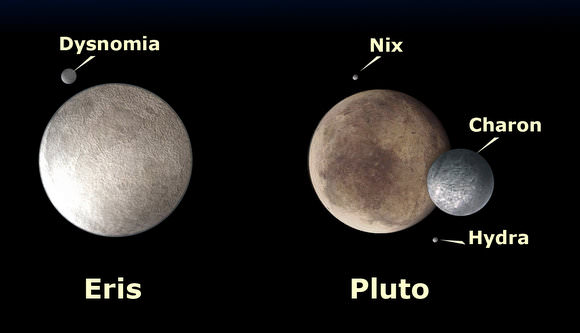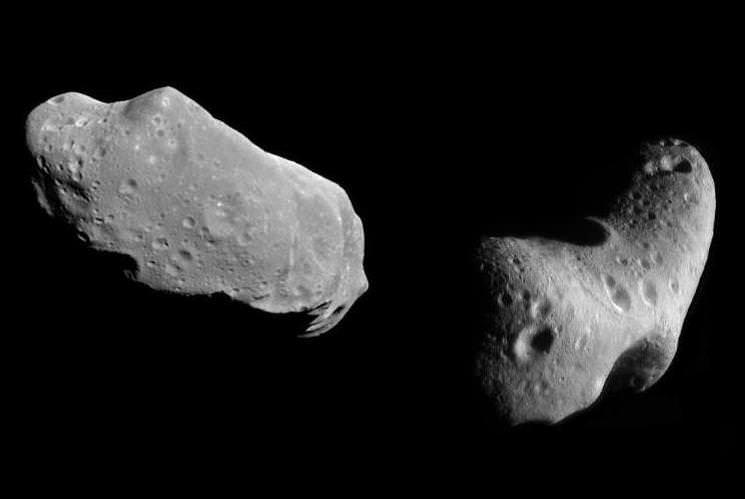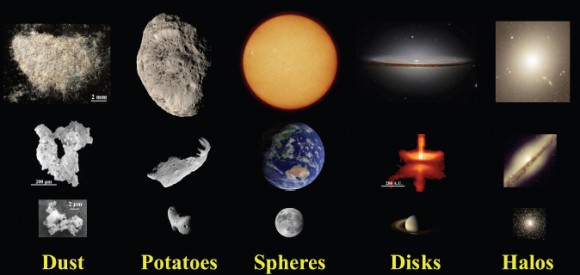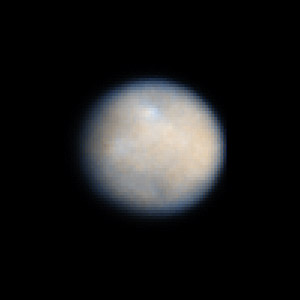[/caption]
Or two dwarf planets in the Kuiper Belt…
Eris — that pesky big dwarf planet that caused all the brouhaha about planets, dwarf planets, plutoids and the like — has gotten a closer look by a team of astronomers from several different universities, and guess what? Eris and Pluto have a lot in common. Eris appears to have a frozen surface, predominantly covered in nitrogen ice and methane, just like Pluto.
The scientists integrated two years of work conducted in Northern Arizona University’s new ice research laboratory, in addition to astronomical observations of Eris from the Multiple Mirror Telescope Observatory from Mount Hopkins, Ariz., and of Pluto from Steward Observatory from Kitt Peak, Ariz.
“There are only a handful of such labs doing this kind of work in the world,” said Stephen Tegler, from NAU and lead author of “Methane and Nitrogen Abundances on Eris and Pluto,” which was presented this week at the American Astronomical Society’s Divison of Planetary Science meeting. “By studying surfaces of icy dwarf planets, we hope to get a better understanding of the processes that affect their surfaces.”
NAU’s ice lab grew optically clear ice samples of methane, nitrogen, argon, methane-nitrogen mixtures, and methane-argon mixtures in a vacuum chamber at temperatures as low as minus 390 degrees Fahrenheit to simulate the planets’ cold surfaces. Light passed through the samples revealed the “chemical fingerprints” of molecules and atoms, which were compared to telescopic observations of sunlight reflected from the surfaces of Eris and Pluto.
“By combining the astronomical data and laboratory data, we found about 90 percent of Eris’s icy surface is made up of nitrogen ice and about 10 percent is made up of methane ice, which is not all that different from Pluto,” said David Cornelison, coauthor and physicist at Missouri State University.
The scientists say the recent findings will directly enhance NASA’s New Horizons spacecraft mission, currently scheduled to fly by Pluto in 2015, by lending greater value to the continued research of Eris and Pluto.
Source: Northern Arizona University, DPS




